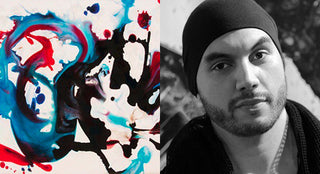Aerosyn-Lex gets around. In February alone he did a large-scale painting exhibition for New York Fashion Week and creatively directed the TRANOI fashion trade show in New York as well as in Paris (at the Carousel du Louvre no less). Add to that an installation with Dell and Intel at Fader Fort for SXSW and you’ve got a packed schedule indeed. Of course that’s nothing new for the artist who worked with the CFDA last year on their awards – “I kind of overhauled it and that was the first time they ever had a single artist do all of that work. So I worked with Diane von Furstenberg [the president of the CFDA] and her team. Of course Rihanna showed up naked” – has done a film for the BBC, an exhibition at the MOMA and linked up with brands like Nike, Kenzo, and Kanye West.
It seems that there isn’t a shortage of people drawn to his work, which is characterised by a series of juxtapositions and typically integrates calligraphy, a trade he picked up going to art camps when he was younger but has since reinforced during his studies at Pratt and a trip to Tokyo. And though it seemed obvious that we should discuss his relationship with fashion, seeing as there is so much of it on his resume and how he thinks it’s “interesting how it’s always had a deep relationship with artists,” we looked instead to his process and his outlook on the evolving world around him and how his artistry fits in with it.
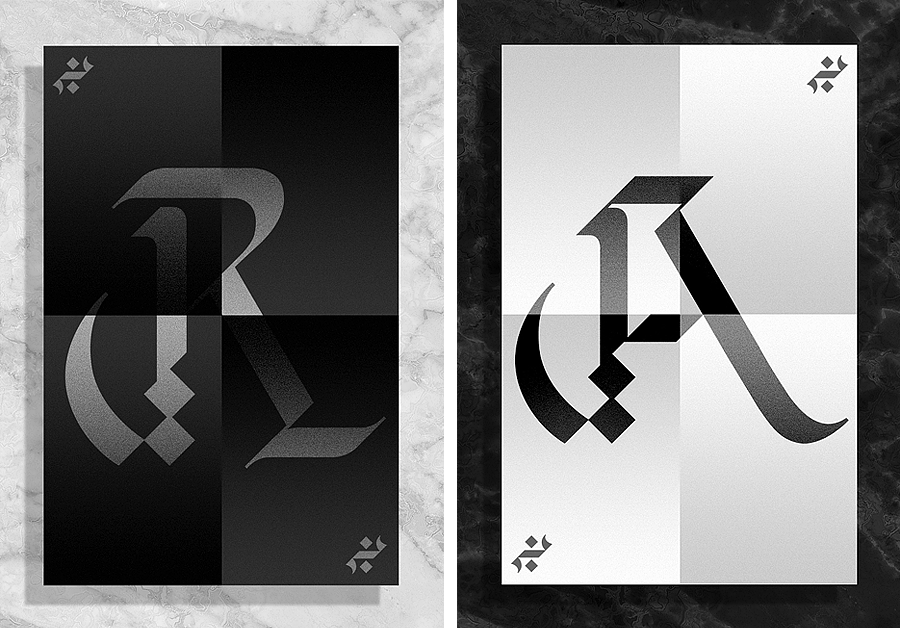
On His Process:
The approach is always the same to me, I have a very painterly approach, no matter if I’m doing clothing or creative direction or something else. I feel like there’s always this approach of curiosity, like an initial inquisitiveness, and then there’s the want to sort of communicate something and the wish to do it in a very hands-on and crafts-based way. It’s always about how do you maintain the clarity of that concept and idea through the lens of production or technology. I want to maintain that focus so I’m able to project my vision and idea through all those things.
“THE ROOT WORD FOR ART IN ITS GREEK ORIGIN MEANS TO MAKE… ARTISTS WERE LABORERS, THEY WERE CRAFTSMEN, THEY WERE ARTISANS. THAT TO ME IS PURE.”
If I’m focusing more on calligraphy work, that process is very meditative. You just almost zone out, it’s like you’re in a trance doing that stuff. I’m spiritual in many ways, so for me there’s a great peace there and I like that a lot. Not to be hippy-dippy, but there’s a very zen nature while doing that. It’s almost like a presence of mind thing; you have to be in the moment and that’s something counterintuitive to the way that we live. We are not used to that. We are used to being in every moment, not one particular moment. I think we live with access to everything all at once and this becomes about finding a real deep connection with one thing and being in that spot where it translates to motion and gesture to get these pieces.
So I guess in that regard, I think I’m more interested in the process because particularly in the gestural work you really open yourself up to the laws of the universe. With these very flowing paintings ,you don’t have total control; I can’t dictate where every little thing is going to go. But in that lack of control there’s control so that’s interesting for me. So I definitely focus on the process.
I think with the end result it’s really a different process altogether.
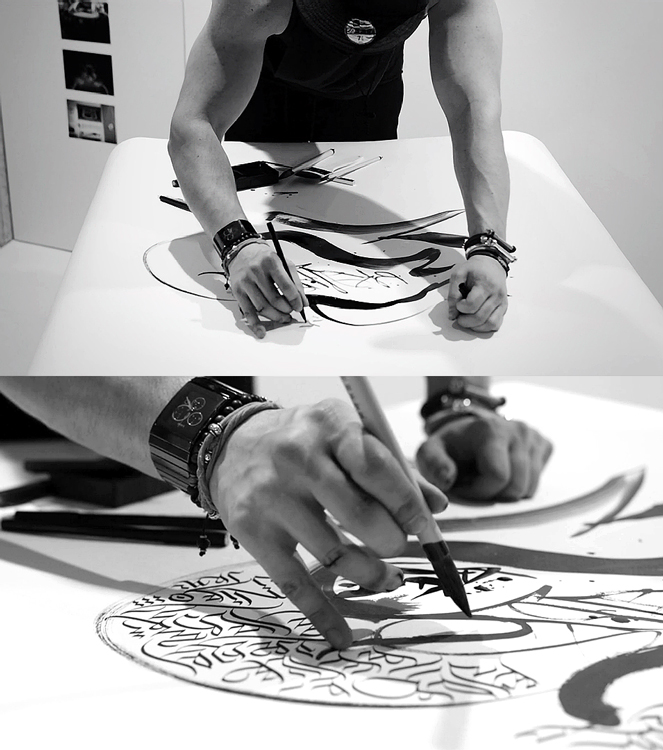
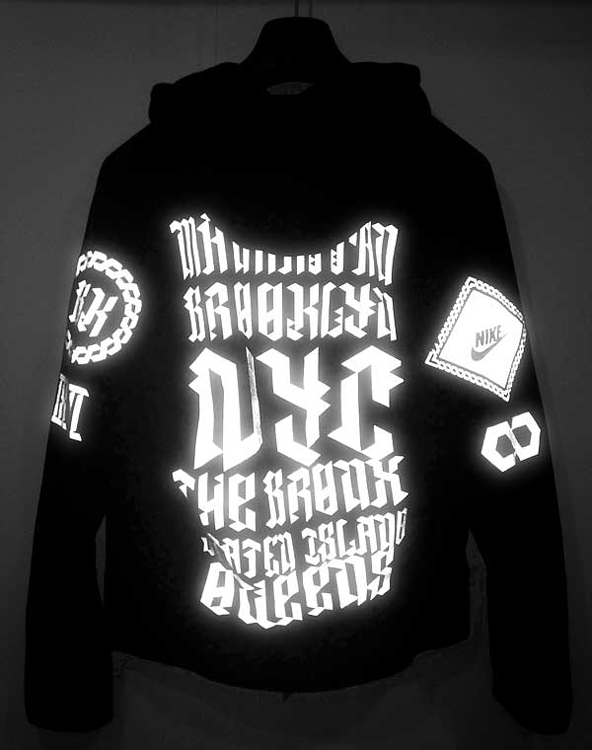
On The Juxtaposition of The Modern And Archaic:
Yes, 100% [that juxtaposition is a conscious one]. For me there’s always this juxtaposition of technology and craft. I really worked on that in this piece I won the Grand Prize at Scope NY for. It was an installation that was sort of an interactive sculptural piece. These are things that I’m just a nerd about; even in this fluid stuff, there’s always the idea of juxtaposition, with the calligraphy I want to juxtapose the fact that all languages have a root. And the way that we communicate – whether visually, through sounds, through words, through music or whatever – there’s an innateness to that and even though a calligraphic style is eastern or western or Arabic, there are similarities in the movements and the control. So for me, juxtaposing them visually, I’m trying to highlight the similarities with the intention.
I think there’s a lot of similarities between craftsmanship and hand skill and traditional artisans – the root word for art in its Greek origin means to make, it wasn’t the idea or artist as ego or artist as Picasso; that’s a new invention, that’s like a few hundred years old at best. Before that artists were laborers, they were craftsmen, they were artisans. That to me is pure and I love that.
I think there are a lot of “artists” out there that are great creative entrepreneurs that have a sharp understanding of the landscape. They really know how to communicate what they are doing and utilize social media and whatever is around them to craft this persona of an artist but when you get down to the substance and go beyond, there’s not a lot there. And that’s really just a product of where we are.
Because of that, I’m really interested in the old shit because there’s truth to it and there’s something captivating about it. So I like looking at that and then bringing it into the modern idiom. It’s all about not only doing but how do you do it without being a hermit in a cave doing like a sand sculpture that nobody sees. How do you do it in this modern context? And that’s a challenge.
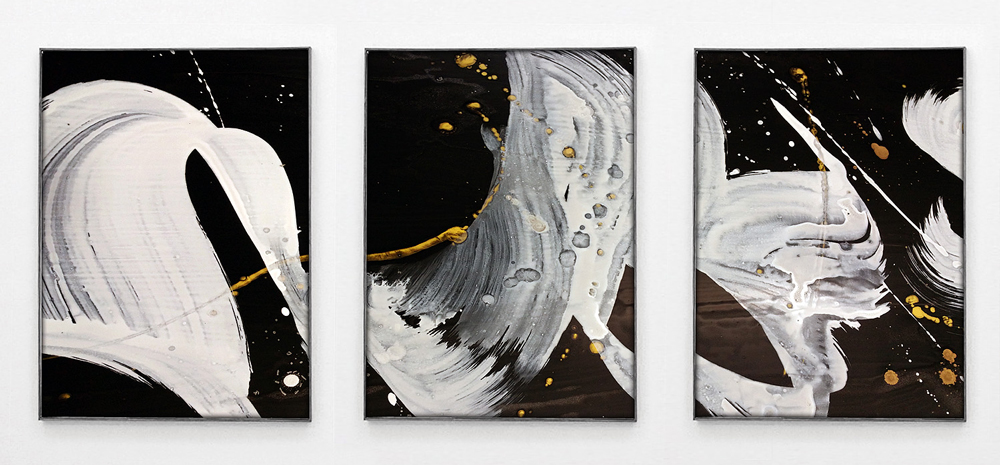
On Being An Artist In The Age Of Social Media:
If you’re an artist, people want that you do black and white squares or you’re famous for doing squiggly lines or geometric colorful shapes or whatever it is. If you are more than that and you haven’t already gotten this celebrity status – if you’re not Tom Ford directing a movie or something – then it’s very difficult. They want you to be able to boil it down into a 140 character tweet or a square image on Instagram or a monochrome timeline or something. If you can’t do that, then it takes more time than most people are willing to give. That’s tough.
“[WITH] THE UBIQUITY OF SOCIAL MEDIA AND THE WAY THAT PEOPLE NOW CONSUME CONTENT, AND HOW THEY CONSUME CREATIVITY, IT DOESN’T DO SERVICE TO [MULTIPLICITY IN ART].”
What’s difficult is that media and the ubiquity of social media and the way that people now consume content, and how they consume creativity, it doesn’t do service to that kind of multiplicity. It’s really tough to find the platform to have these more longform dialogues and conversations. So that’s for better or worse, I ended up here because I’ve been just doing stuff I love to do. All my projects, I’m super proud of them and am really blessed to be able to work on them. At the end of the day, it’s really about how best to really communicate that story if you’re not really able to sit down and talk it out.
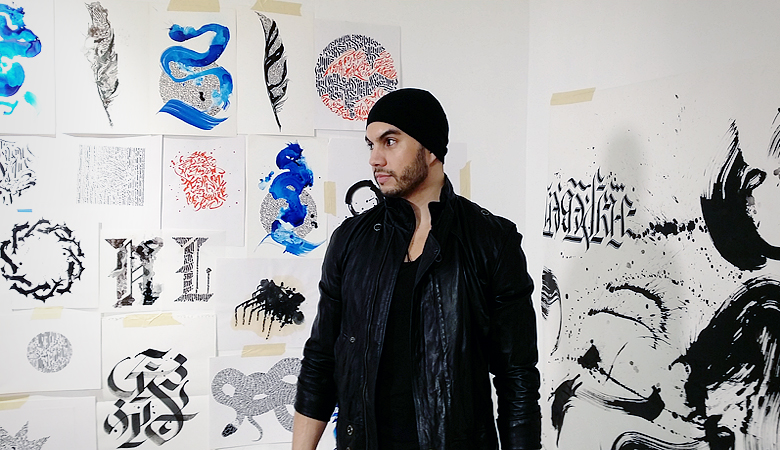
On Whether Conceptual Art Is Appreciated Now:
I hope so! I want to believe that, yes.
I mean everything we look at is on a screen. So do you think we can really appreciate that?
I think it’s really few and far between. It’s really about how you measure appreciation. It’s like, is it monetary value? Is it likes on social media? Is it blog hits? Or, is it the right people valuing it and then allowing an artist to have a career? That’s the more apt question because I feel like I struggle with the fact that there’s a lot of stuff that is appreciated that I feel is terrible. That’s not my problem to solve but it’s my issue to understand why that is. For me, I think it’s just the nature of the time in which we live.
When Pollock did Autumn Rhythm or when [Wassily] Kandinsky first came out, critics were like: what is this? There’s no apple, there’s no staircase, there’s no anything. Or when Cubism came out or even Futurism in Italy, people were like, “What the fuck is this? It’s not traditional.” Whenever new stuff comes out, it takes a while for people to get acclimated to it. In terms of whether this generation, in the concentration that we need to be, will appreciate it – probably not. It’s not going to reach that critical mass where streetwear kids are going to be wearing crazy brush strokes. I think they would rather rock an emoji or Kim Kardashian because that’s everyone’s thing. But that’s fine.
◢◢◢ SCRIPTURA VITAE † A film by Aerosyn-Lex Mestrovic | Music by Diplo ◣◣◣
On Success:
Art is a luxury. The pursuit of art is a luxury. Art in and of itself is a useless pursuit. That’s not to say it’s not necessary for the human experience, but I think for me the reason I do it is because I wouldn’t know how to do anything else. In terms of success I have my own ideas. I think traditional artists have gone three routes: there’s the starving artist, which is sort of a martyr as artist. They sacrifice all worldly goods and pursuit for the passion of art. There’s been the commercial artist who are artists who apply creativity in a commercial realm and are compensated that way as professionals. LIke architects and stuff. And then there are the wealthy artists who just have money and can now do what they want and of course that’s great for them. For me, coming from a very humble background and also not trying to be broke, I like nice jackets and Miansai bracelets and iPads and cool shit – it’s like how to strike that balance.
“ART IN AND OF ITSELF IS A USELESS PURSUIT. THAT’S NOT TO SAY IT’S NOT NECESSARY FOR THE HUMAN EXPERIENCE, BUT I THINK FOR ME THE REASON I DO IT IS BECAUSE I WOULDN’T KNOW HOW TO DO ANYTHING ELSE.”
I always feel super blessed that I’m afforded the opportunities and the luxuries of being an artist because it’s like a hustle you know. But I think for me, I want to create something of lasting impact and longevity. When you look at my work it may all be different but there’s a narrative, at least to me. It’s just all the stuff that goes on in my head. And sometimes I think, “Maybe I should just dumb it down. Maybe I should just do the same thing over and over and stay in my lane. Maybe that will be better for the time in which we live,” but creatively in my heart it’s just, I don’t want to do that. I want to continue trying to do the next thing. Like, “Damn, I had this idea to work with this new material and I really want to make that happen.” I think a part of success is the freedom to do those things as well.
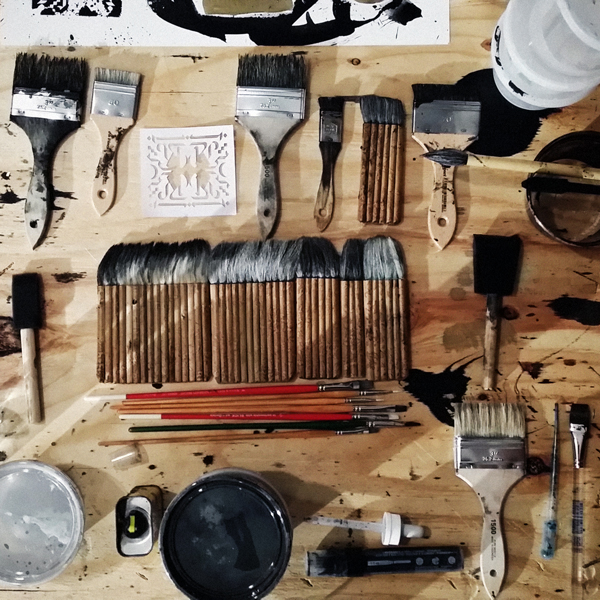
::
Follow Aerosyn-Lex at aerosynlex.com and on Instagram @aerosynlex.

